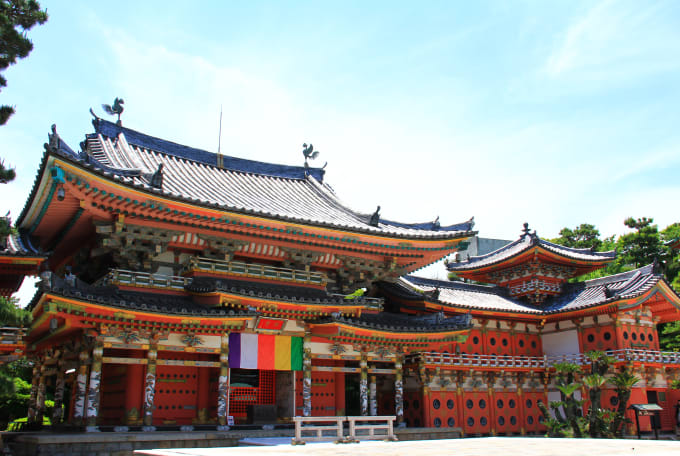

ITINERARIES Cycling the Shimanami Kaido Onomichi
Cycle from Honshu to Shikoku on this scenic 70 km-long bike route.
Highlights
- Ride through quaint seaside towns and citrus groves
- Pass by Kosanji Temple
- View the Seto Inland Sea from one of the many majestic bridges along the route
How to Get There
Because of its prime location between Hiroshima and Imabari , Onomichi is filled with guesthouses, bakeries, gift shops, and restaurants. There are also many shops that offer bicycle maintenance and rentals.
Onomichi is famous for its many temples. A temple walk connects 25 of them, winding up and down the many cobbled streets that criss-cross along the city's high hills.
The most important temple is Senkoji, built in 806. It is perched high above the town and is accessible by a small ropeway. On the temple's grounds, you can find the Tama no Iwa, a large rock said to contain a legendary gem with the power to light up the night.
The temple's Senkoji Park has an observatory which offers stunning views of the town, sea, and the Shimanami Kaido.
After exploring the town, head to the port or one of the other rental points in town and get yourself a bike.
The Shimanami Kaido is famous among biking enthusiasts around the world. Experienced cyclists can complete the 70-kilometer journey along it in about four hours. A leisurely cycle while taking in the scenery and stopping at local tourist spots along the way will take about 10 hours. Alternatively, you can choose a course and cycle just a section of it.
After Onomichi, cyclists will cross Mukojima, and then pass on to Innoshima. This island is known for Suigun Castle. Built in 1983, this structure houses a museum on the Murakami Suigun, an armed naval clan active in the area from the mid-14th to the 16th centuries. As they demanded tolls from passing merchants, they are often referred to as pirates. Here you can see weapons, armor, and artifacts that once belonged to the clan.
The next island, Ikuchijima, is known for Kosanji Temple . The temple was founded in 1935 by businessman-turned-priest Kanemoto Kozo to secure his mother's place in Buddhist paradise. It took him more than 30 years to complete the complex, which contains replicas of many of Japan's most famous temples and shrines, including Nikko's Toshogu Shrine and Kyoto's Byodoin Temple .
Ikuchijima is a great place for cycling for families and couples.
Beyond Ikuchijima is Omishima, the largest island along the Shimanami Kaido. The island's Oyamazumi-jinja is one of the most popular tourist spots on the route. As the shrine is dedicated to the gods of sailors and soldiers, many military leaders have left their swords and armor here as offerings over the centuries. Thus the shrine now has the largest museum of samurai-era military equipment in the country.
Next on the route is Hakatajima, known for Kitaura Hachiman Okami-jinja Shrine. Originally built in 673, it is said to be the oldest shrine on the island.
The Kurushima Kaikyo Bridge from Oshima to Imabari marks the end of the route. Completed in 1999, it is the world's first triple suspension bridge with a total length of about 4,100 meters.
If you have some time to spare before crossing over to Imabari, you may want to visit the Yoshiumi Rose Park on Oshima Island. The park contains 3,500 roses from 400 different species. Stop by between mid-May and December to see them in bloom.
Imabari , Ehime Prefecture's second largest city, is home to a thriving maritime industry. Other industries, such as the manufacturing of tiles and towels, as well as fishing, thrive in the area. Additionally, six sacred sites on the Shikoku 88 Temple Pilgrimage are located here.
The local favorite in Imabari is a dish of fried pork and eggs over rice. Seafood caught in the Kurushima Straits is especially delicious. Ramen made from local sea bream is also popular.
Only 1.5 hours west of Onomichi , Hiroshima has everything a traveler is in search of: delicious cuisine, beautiful parks, a world-class museum, and great nightlife. A top highlight is a visit to Miyajima to see Itsukushima-jinja and its vivid red torii gate which appears as if floating during high tide.




















































































